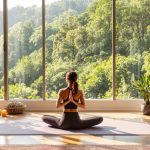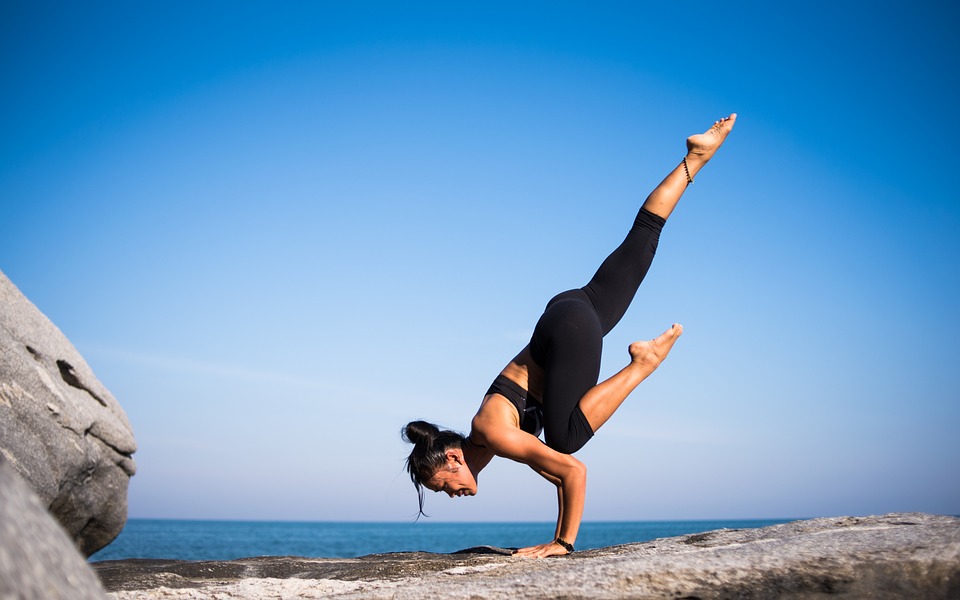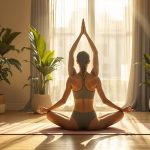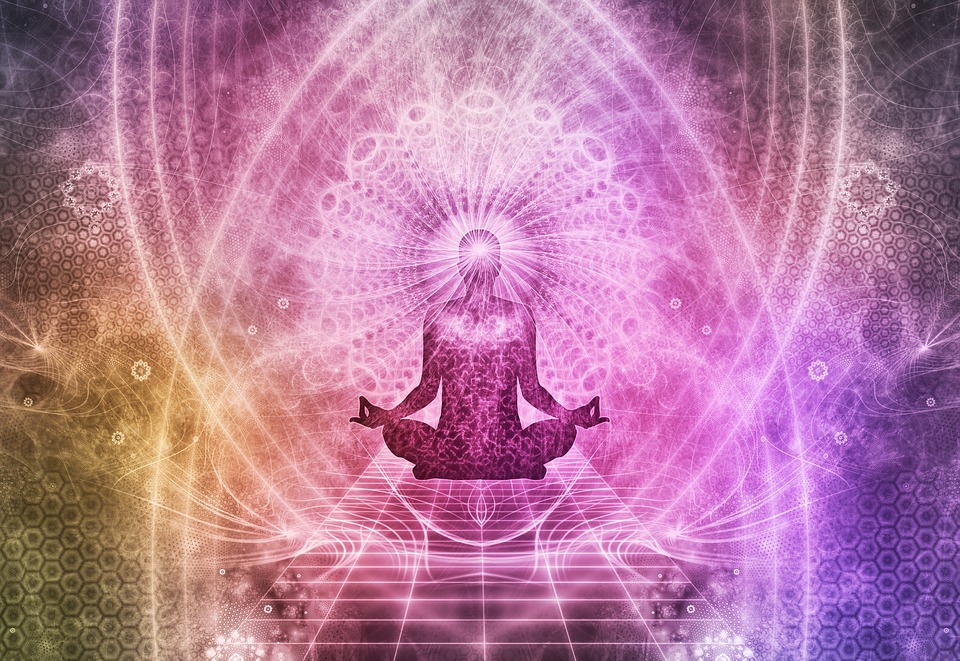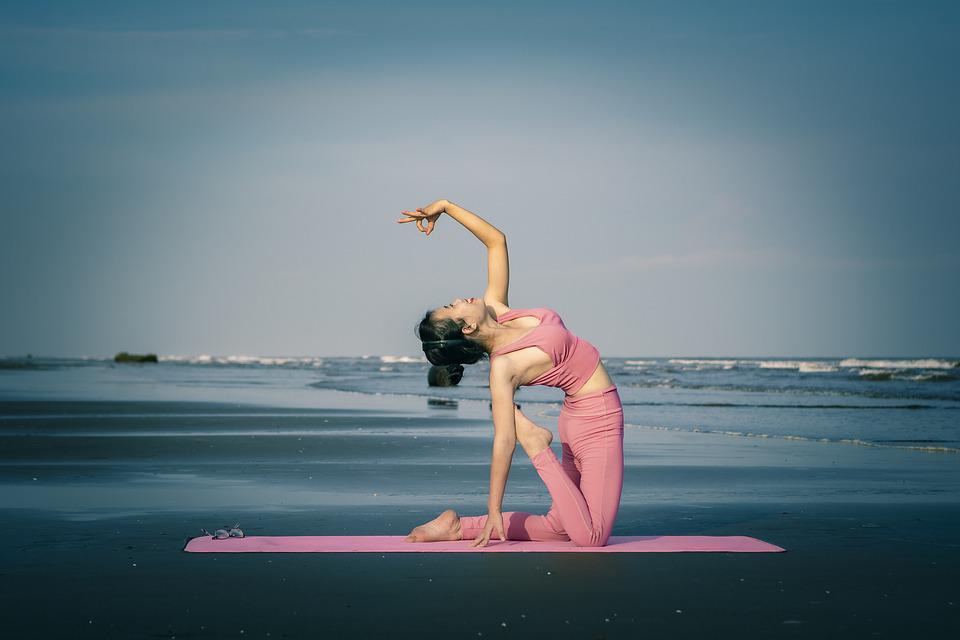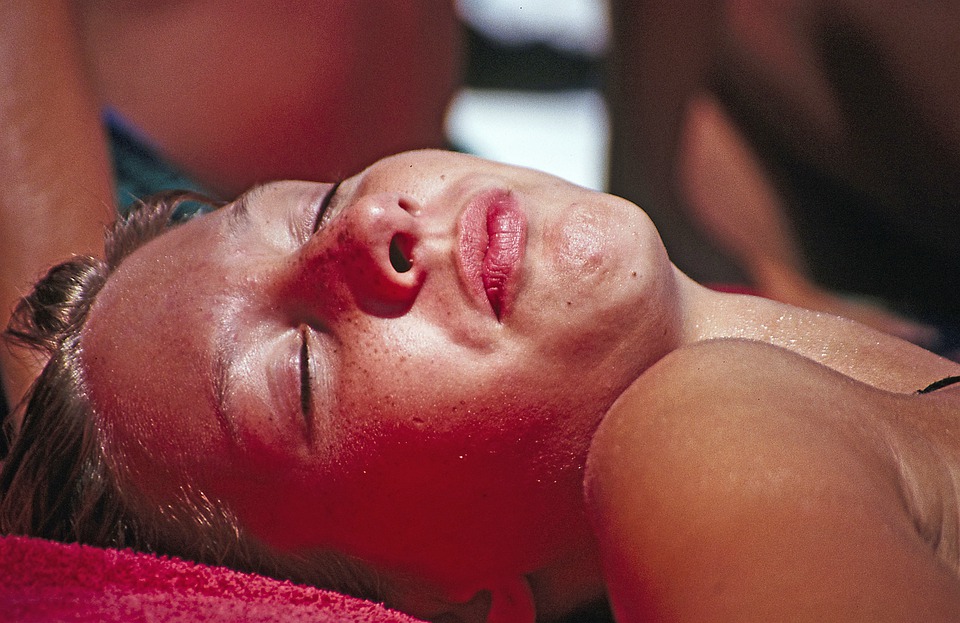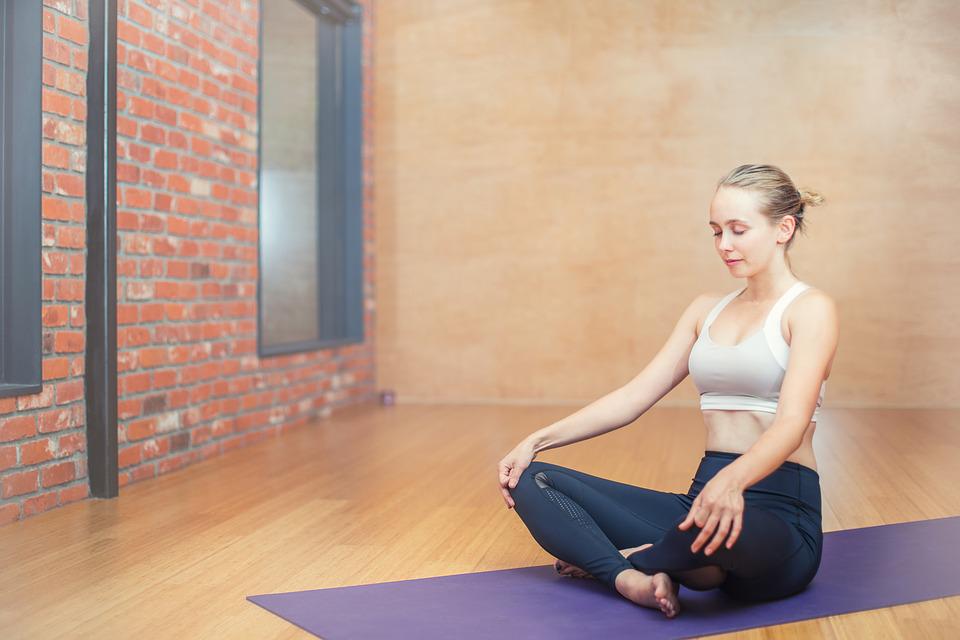
Yogis are well aware of the countless benefits of practicing yoga regularly. With such a wide variety of styles and poses to choose from, it’s easy to find a routine that perfectly suits your needs, whether you’re looking to wind down or get pumped up.
If you’re looking for a way to get energy, try doing a sequence with lots of backbends. If you want to get your heart pumping, try doing a few Sun Salutations. Most yogis know how to get their hearts racing and their bodies sweating.
There are also yoga poses that have the opposite effect of the ones that energize you. These yoga poses will help to bring you peace, stillness, and ease.
Here Are 7 Relaxing Yoga Poses to Calm Your Body and Mind:
- Baddha Konasana (Cobbler’s Pose)
Cobbler’s Pose is a good choice if you want a more active stretch than Easy Pose, but you still want to be fairly still.
Playing with the placement of your feet will change how intense the stretch is in your hips.
Let’s try it:
- Begin in a seat with both of your sitting bones rooting evenly into your mat
- Lengthen your spine and reach the crown of your head up high toward the ceiling
- Join the soles of your feet together and open your knees, encouraging them toward the mat
- Bring your hands either to your calves or the inner arches of your feet
- Maintain length in your back body – if you feel your back beginning to round, ease out of the pose by moving your heels farther away from your body
If you’re finding that your knees are lifting away from the mat in this pose, try placing yoga blocks under your knees to close the space between your knees and the mat. If you don’t have blocks available, pillows can work too.
- Supine Twist or Supta Matsyendrasana
Twists are a great way to relieved stress and anxiety, as well as stimulating and detoxifying the organs in your torso. The Reclined Spinal Twist offers many benefits, many of which are listed below:
- It stretches the back muscles and glutes.
- It massages the back and hips
- It helps to hydrate the spinal disks.
- It lengthens, relaxes, and realigns the spine.
- It massages the abdominal organs and strengthens the abdominal muscles. As a result, this pose tones the waistline and also helps to remove toxins.
This twist also helps improve blood circulation to your digestive organs, which in turn improves the health and function of your entire digestive system.
Poses like Upward-Facing Bow/Wheel Pose (Urdhva Dhanurasana) and Camel Pose (Ustrasana) can leave your back feeling pretty tight. This pose is great for counteracting that by stretching out your front body. Plus, it feels great after a backbend!
Reclined Spinal Twist is gentle and good for stress, but be careful if you have back pain or degenerative disk disease because twisting might make the pain worse.
How to Get into Supine Twist
- To begin, lie on your back with your knees bent and your feet flat on the floor. You can rest your head on a pillow or blanket for extra neck support. Let your arms rest at your sides.
- On an exhalation, draw both knees to your chest and clasp your hands around them. This is Knee-to-Chest Pose (Apanasana).
- Extend your left leg along the floor, keeping your right knee drawn to your chest. Extend your right arm out along the floor at shoulder height with your palm facing down.
- Shift your hips slightly to the right. Then, place your left hand on the outside of your right knee. Exhaling, drop your right knee over the left side of your body. Keep your left hand resting gently on your right knee.
- Turn your head to the right. Soften your gaze toward your right fingertips. Keep your shoulder blades pressing toward the floor and away from your ears. Allow the force of gravity to drop your knee even closer to the floor. If your right toes can touch the floor, allow your foot to rest.
- Hold the pose for 10-25 breaths. On an inhalation, slowly come back to center, bringing both knees to your chest in Knees-to-Chest Pose (Apanasana).
- Exhale, and extend your right leg along the floor. Repeat steps 3-6 on the opposite side.
- When you’re finished with the pose, hug your knees to your chest for a few breaths in Knee-to-Chest Pose (Apanasana). Then, slowly exhale as you extend both legs along the floor.
- Balasana (Child’s Pose)
This go-to relaxing yoga pose, known as savasana, is much more than a way to relax during a sweaty Vinyasa class. It’s a time to bring your focus inward, block out any outside distractions, and reconnect with your daily intention.
Let’s try it:
- Starting on hands and knees, sit your hips back toward your heels
- To make this a hip opener, separate your knees to the outer edges of your mat, bring your big toes together, and extend your arms out in front of you
- Alternatively, bring your legs together and reach your arms alongside you, reaching your hands to your feet
- Rest your forehead on the mat
- To stimulate your Third Eye Chakra (the space between your eyebrows), gently massage your forehead back and forth on your yoga mat
If your forehead doesn’t reach the mat when you are doing yoga, you can place a yoga block or blanket underneath it, or stack your palms and let your head rest there.
- Parivrtta Sukhasana (Easy Seated Twist)
This aids in the detoxification process by helping the body to sweat out impurities. Twists are beneficial because they help to detoxify the body by compressing organs and restricting blood flow. This allows the body to sweat out impurities.
Doesn’t that sound better? You feel the benefits of yoga when you release the twist because it allows your organs to receive more blood, which improves circulation and helps the body get rid of waste products.
The benefits of twists are twofold: they help to get stagnant energy moving and flowing, and they also symbolize the release of anxieties and worries that the body and mind do not need to hold onto. twists can be a great way to start your day, or to release tension after a long day.
Let’s try it:
- From a cross-legged position, inhale to sweep your arms up over your head
- As you exhale, bring your right hand to your left knee and your left hand to the mat behind you
- Extend your left arm long to help you to sit up tall – imagine this arm functioning as a second spine
- On your inhales, sit up taller
- On your exhales, twist deeper
- After a few breaths use an inhale to return to center
- On your next exhale, twist the other way
If the traditional way of sitting cross-legged doesn’t work for you, try it with your legs extended out in front of you, or by lying on your back and twisting from that position.
- Cat (Marjaryasana) and Cow (Bitilasana)
The Cat-Cow yoga pose warms the body, brings flexibility to the spine, stretches the back torso and neck, and softly stimulates and strengthens the abdominal organs. It also opens the chest, encouraging the breath to become slow and deep. The spinal movement of the two poses stimulates the kidneys and adrenal glands. Coordinating this movement with your breathing relieves stress and calms the mind.
This sequence of exercises also helps improve your posture and balance. It helps keep your spine in alignment, and can help prevent back pain when done regularly.
How to Get Into Cat and Cow Pose
- Start in a tabletop position, and take a moment to find yourself on your mat. Ensure that the shoulders are aligned over the wrist, and hips over the knees.
- As you inhale, press the mat away from you as you lift your chest and tailbone towards the sky. Let the belly sink towards the earth. Lift your head to look forward. You are now in Cow Pose.
- As you exhale, round the spine, and continue pressing the mat away as you tuck the chin towards your chest and tailbone in. Keep the belly drawn in and spine curved towards the sky. You are now in Cat Pose.
- Repeat this sequence 3 – 5 times.
- Seated Forward Fold or Paschimottanasana
Ancient yogis would practice Paschimottanasana facing the sunrise. The pose can deeply stretch the entire back, or “west,” side of the body as the yogi folds forward toward the sun. The pose can feel “intense,” but it is important to remember never to force it or push too hard. The more you can learn to relax in this pose, the deeper your stretch will be.
Paschimottanasana stretches the spine, shoulders, pelvis, and hamstrings. And while traditional yoga texts say Paschimottanasana can cure disease, modern-day yoga teachers agree to its many other benefits, which include:
- Relief from stress
- Improved digestion and appetite
- Relief from menstrual pain and symptoms of menopause
- A calmer mind
- Reduced anxiety and fatigue
- Improved sleep and relief from insomnia
This pose is also believed to have therapeutic benefits and be great for relieving high blood pressure, infertility, and sinusitis. It is also known as a pose that can help treat obesity.
How to Get into Seated Forward Fold
- Sit on the edge of a firm blanket with your legs extended in front of you in Staff Pose (Dandasana). Reach actively through your heels. Beginners should bend their knees throughout the pose, eventually straightening the legs as flexibility increases.
- Inhale as you reach your arms out to the side, and then up overhead, lengthening your spine.
- Exhaling, bend forward from the hip joints. Do not bend at the waist. Lengthen the front of your torso. Imagine your torso coming to rest on your thighs, instead of tipping your nose toward your knees.
- Hold onto your shins, ankles, or feet — wherever your flexibility permits. You can also wrap a yoga strap or towel around the soles of your feet, holding it firmly with both hands.
- Keep the front of your torso long; do not round your back. Let your belly touch your legs first, and then your chest. Your head and nose should touch your legs last.
- With each inhalation, lengthen the front torso. With each exhalation, fold a bit deeper.
- Hold for up to one minute. To release the pose, draw your tailbone towards the floor as you inhale and lift your torso.
- Supine Pigeon (using the wall)
Supine Pigeon Pose, also called Eye of the Needle when it’s not done with the wall, is a yoga pose that helps relieve stiffness in the outer hips and lower back. If you spend a lot of time sitting, those muscles can become tight and short because they’re not being used. This pose can feel good at the end of a long day of sitting at work, school, or in a car or airplane. It’s often taught near the end of a yoga class as a way to relax and open the spine, hips, and low back.
This pose helps with stiffness and pain in the lower body, as well as circulation problems. It can also help with anxiety and stress. Women may find relief from digestive issues and menstrual pain.
How to Get into Supine Pigeon Pose
- Bring your mat to the wall and begin by lying on your back with your legs extended up the wall. Leave about 1′ of space between your buttocks and the wall.
- Bend your knees, placing the soles of your feet flat on the wall. Separate your feet so they are hip-width apart and the thighs are parallel to one another.
- Straighten your left leg upward, extending your heel toward the ceiling. Then bend your left knee and cross your left ankle over your right knee. Bring your left, outer ankle to the outside of your right knee so your foot hovers in the air. Then flex your left foot, actively pressing through your heel while simultaneously pulling your toes back toward the left.
- On an exhalation, draw your right knee toward your chest. Slide your left hand and forearm through the space between your legs and clasp both hands around the back of your right leg’s thigh. If it is possible for you, hold onto your shin, instead.
- Keep your back flat on the mat (including shoulders and tailbone). Release your shoulder blades down toward your waist. Broaden across your collarbones.
- Draw your tailbone and sacrum down toward the mat to lengthen the spine even more.
- Tuck your chin softly and gaze down the center line of your body. Close your eyes.
- Hold for up to one minute. Keep your breath smooth and even.
- With an exhalation, release your leg and place your right foot on the floor. Extend your left leg straight up to the ceiling again, and then bend your knee and place your left foot on the floor. Repeat the pose on the opposite side for the same amount of time.

